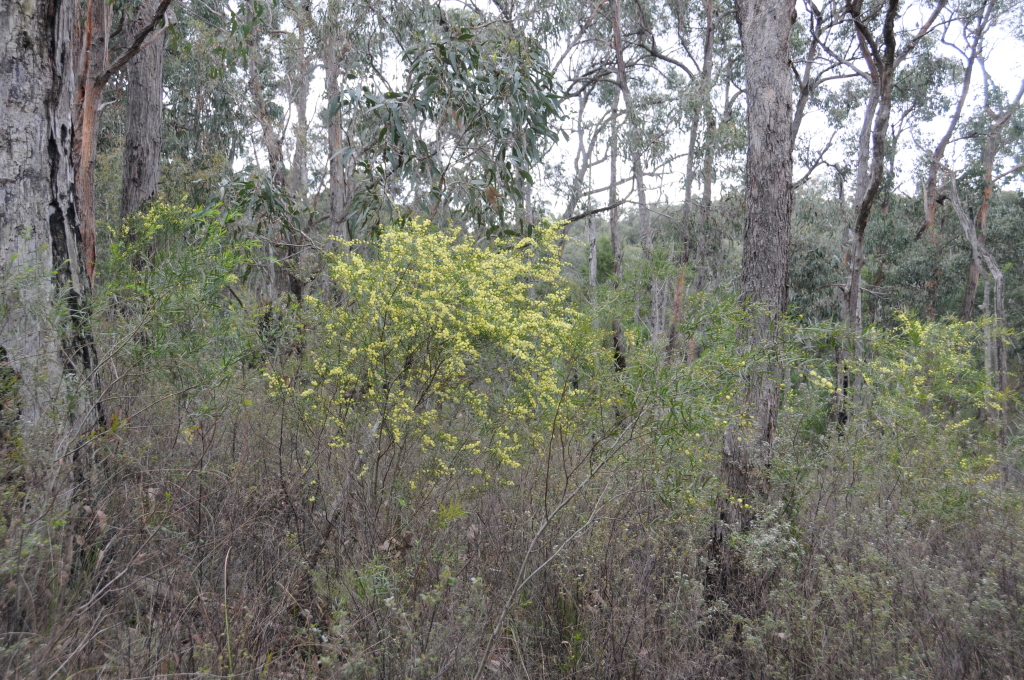Acacia stictophylla
Court ex Maslin & D.J.Murphy Dandenong Range Cinnamon WattleAromatic, single-stemmed shrubs, 2–4 m high; branchlets not or hardly flexuose, with glabrous or minutely hairy ribs. Phyllodes narrowly elliptic to lanceolate-elliptic, (4–)5–10 cm long, (2–)3–6(–12) mm wide, straight or slightly curved, thin, acute to short-acuminate, sometimes obtuse-mucronate, resinous-punctate, sometimes viscid, glabrous or margins and main vein with appressed hairs; vein 1, lateral veins few and obscure, sometimes forming a faint continuous longitudinal vein near the phyllode margin; gland 0–0.5(–1) mm above pulvinus. Peduncles (1–)2(–4) per axil, sometimes in very short racemes (rachis c. 1 mm long), tomentose, hairs rather long and lax, basal bract usually caducous; heads globular or obloid (in bud), 8–11 mm diam., 30–50-flowered, light yellow to lemon yellow. Bracteoles acuminate, >1 mm long, brown, clearly exceeding young buds and the immature head then appearing burr-like. Flowers 5-merous; sepals united. Pods linear, 2–6 cm long, 3–4 mm wide, charcaceous, glabrous or with very sparse, minute appressed hair; seeds longitudinal, obloid, 3.5–4.5 mm long, shiny, black, funicle twice folded, aril terminal. Flowers Aug.–Nov.
GipP, HSF, HNF. Restricted to the Dandenong Ranges where it is often locally common in the riparian zone on hillsides in tall forest and open woodland.
Specimens with unusually wide phyllodes may resemble A. leprosa var. uninervia. This taxon is distinguished from A. stictophylla by the gland being c. 2 mm above the pulvinus. More generally, singled-veined varieties of A. leprosa can be distinguished from A. stictophylla by the shorter, obtuse to acute bracteoles that do not exceed young flower buds, fewer flowered heads (A. leprosa has up to c. 30 flowers per head), and shorter, appressed to sub-appressed hair on peduncles.
Acacia stictophylla may also be confused with A. cognata which is distinguished by its phyllodes having 3 (or rarely 5) veins (the phyllodes must be examined carefully because the veins flanking the rather prominent midrib are often very fine), and are less obviously resinous-punctate.
Putative hybrids between this species and A. paradoxa occur in the foothills of the Dandenong Range, where it seems also to hybridize with A. howittii (from cultivated plants).
 Spinning
Spinning
